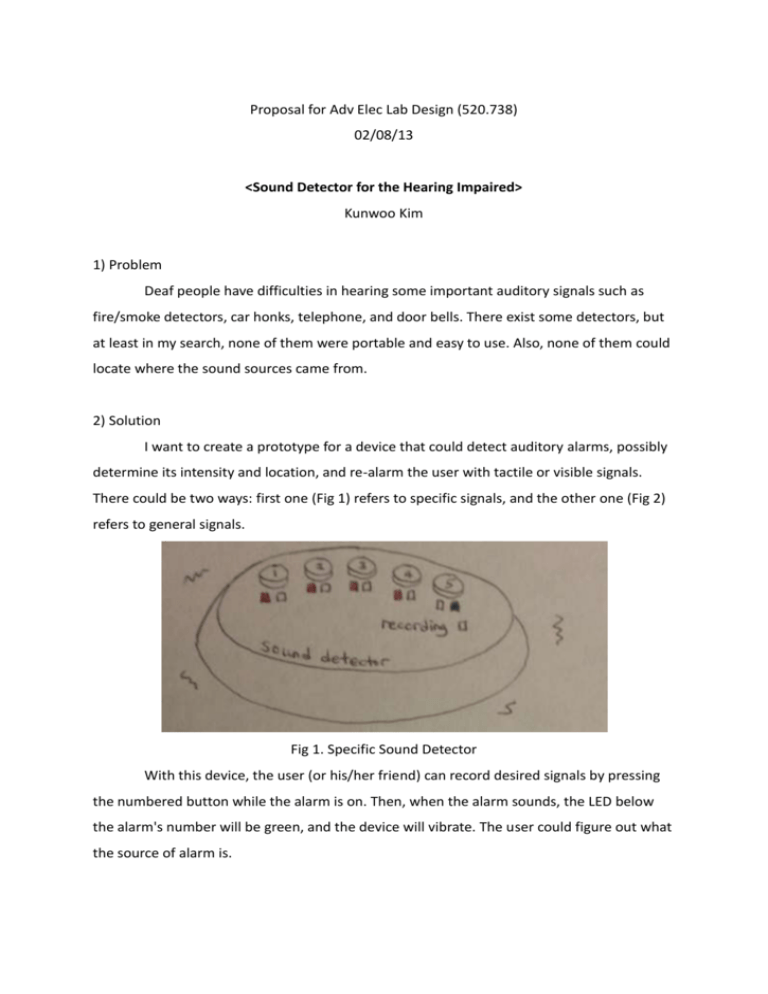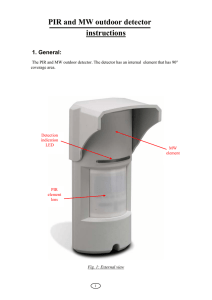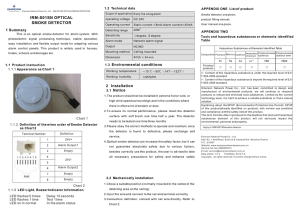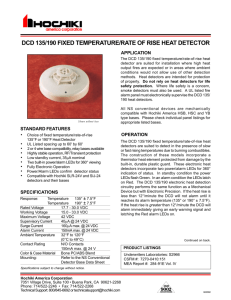Sound Detector for the Hearing Impaired
advertisement

Proposal for Adv Elec Lab Design (520.738) 02/08/13 <Sound Detector for the Hearing Impaired> Kunwoo Kim 1) Problem Deaf people have difficulties in hearing some important auditory signals such as fire/smoke detectors, car honks, telephone, and door bells. There exist some detectors, but at least in my search, none of them were portable and easy to use. Also, none of them could locate where the sound sources came from. 2) Solution I want to create a prototype for a device that could detect auditory alarms, possibly determine its intensity and location, and re-alarm the user with tactile or visible signals. There could be two ways: first one (Fig 1) refers to specific signals, and the other one (Fig 2) refers to general signals. Fig 1. Specific Sound Detector With this device, the user (or his/her friend) can record desired signals by pressing the numbered button while the alarm is on. Then, when the alarm sounds, the LED below the alarm's number will be green, and the device will vibrate. The user could figure out what the source of alarm is. Fig 2. General Sound Detector This device does not contain any recording technology, but it can detect auditory signals around it and possibly locate where the sound source is coming from. It acts like a 'sound compass'. There are three layers of LEDs as shown in Fig 2, and these determine the intensity of the sound source. The LEDs in the inner layer light up when the device detects sound between 40~75dB. The LEDs in the middle layer light up at 75~100dB, and the outer layer when over 100dB. These layers are again divided into multiple degrees, which can be used to locate the sound source. 3) Requirements Either of the two proposed devices require sound detector circuit and a basic band pass filter between human auditory range. The first device requires recording, signal processing to match alarms, and vibration methods (pager motor). The second device requires signal location, signal processing to light up different LEDs at different intensity, and possibly vibration methods.











